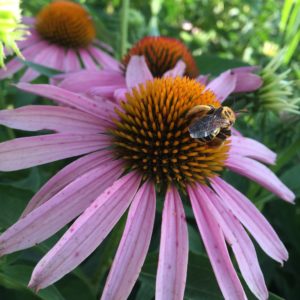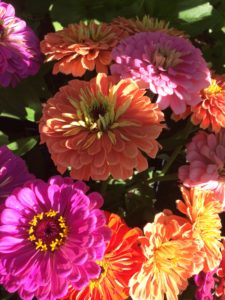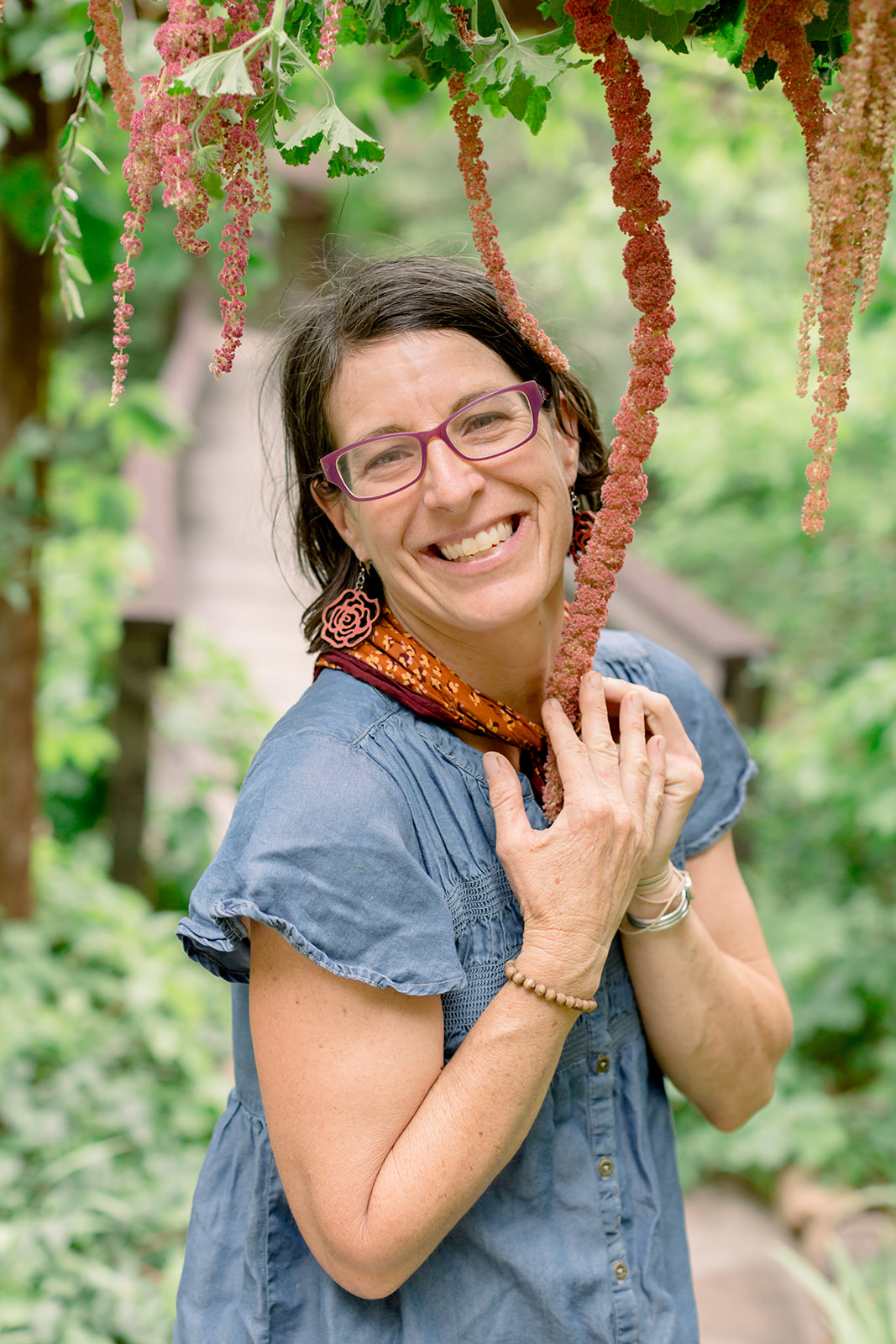 If you’ve ever started over in a later stage of life, you may relate to the challenge and frustration of humbling yourself to the daunting task of learning something entirely new. When I decided to delve into the occupation of farming in my 40s, I encountered the walls I had constructed in my own mind around learning. Because I worked in the field of botany and restoration for 15 years, I had inevitably developed a persona as “an expert” when it came to plants. I did not anticipate all that I could learn and experience when I let go of knowing.
If you’ve ever started over in a later stage of life, you may relate to the challenge and frustration of humbling yourself to the daunting task of learning something entirely new. When I decided to delve into the occupation of farming in my 40s, I encountered the walls I had constructed in my own mind around learning. Because I worked in the field of botany and restoration for 15 years, I had inevitably developed a persona as “an expert” when it came to plants. I did not anticipate all that I could learn and experience when I let go of knowing.
Lesson 1. You are no longer No. 1. Months before I became an apprentice at the Center for Agroecology and Sustainable Food Systems last spring, we received an email that urged us to “prepare to realign our priorities to meet the needs of plants.” No problem, I thought. I am totally ready for this. This meant responding to timers I set on my phone multiple times a day reminding me to drop everything and water the seedlings under my care in the greenhouse. Then I had to clear my social schedule on weekends to irrigate acres of vegetables in the summer heat, and I began to experience that shift in my priorities. It turns out that cultivated plants have serious needs, and you must be invested wholeheartedly in their survival.
 Lesson 2. Forget everything and awaken your beginner’s mind. Liz, the Zen-Buddhist farm manager, painstakingly demonstrated specific harvest efficiencies for every crop we grew that often made the plants healthier and more productive. She showed us seemingly simple ways to move our bodies and pack boxes that she had accumulated in her 25 years as a farmer that would have taken me years to figure out on my own. Like how to snap a chard stem at the base of the leaf where you can feel it yielding to the pressure. “Trust the intelligence in your hands,” she urged, “just beyond your conscious mind.” It was as if I was helping my body remember. This work is old, and most of us have a farmer somewhere in our ancestry, as growing our own food at one time was necessary to our survival.
Lesson 2. Forget everything and awaken your beginner’s mind. Liz, the Zen-Buddhist farm manager, painstakingly demonstrated specific harvest efficiencies for every crop we grew that often made the plants healthier and more productive. She showed us seemingly simple ways to move our bodies and pack boxes that she had accumulated in her 25 years as a farmer that would have taken me years to figure out on my own. Like how to snap a chard stem at the base of the leaf where you can feel it yielding to the pressure. “Trust the intelligence in your hands,” she urged, “just beyond your conscious mind.” It was as if I was helping my body remember. This work is old, and most of us have a farmer somewhere in our ancestry, as growing our own food at one time was necessary to our survival.
Lesson 3. Unleash your powers of observation. I remember when I was 21 years old and an intern at Canyon de Chelly National Monument, I was full of questions. Everything was new about the place, especially the plants, and I wanted to know it all—their names, uses and stories. One day a Navajo elder politely told me that we have two eyes, two ears and one mouth so we can listen and observe twice as much as we speak. I remembered this as a farm apprentice full of burning questions, and tried to be quiet. I started to understand that careful attention is key to finding the answers.
As a scientist, I viewed plants as objects to be named and classified and in the process became blind to their spirits. Because I could say their Latin name and could recognize them in crowded meadows, I thought I knew them. I developed serious biases—weeds are bad and rare plants are special. Yet weeds are here for a reason, in many cases because they were brought to new continents as important medicine. I abandoned my botanical training that begged me to name and classify plants and apprenticed in their unspoken world. I began to unlock the feelings that they inspire in me and let my heart guide my botany.
I paid close attention to how they transformed throughout the season, learning their needs along the way and getting a feeling for their personalities. I introduced myself to them by starting a conversation—and came to appreciate them for countless reasons. There were the plants that always attracted a bevy of insects to their flowers; I noticed how many different species of wasps were attracted to the large, umbelliforous flowers in the carrot family like fennel, dill and Queen Anne’s lace. I found many species of bees dozing sleepily first thing in the morning on the petals of Echinacea and Zinnia flowers.
Eucalyptus, rose geranium, citrus blossoms and Tulsi basil exuded powerful aromas that had a calming or uplifting effect on my spirit. I found they also have tremendous healing properties when taken as teas or essential oils. I experienced how zinnias made me feel lighthearted and joyful, while honeysuckle filled me with nostalgia and longing for home. Slow growing, yet tough and beautiful lisianthus flowers demonstrated patience, and St. Catherine’s lace, an enormous-flowered, native buckwheat in our hedgerow seemed to know the secret to attracting everything good in your life. Once I observed these aspects I researched how their flowers, leaves or fruit could heal me and started making teas, tinctures and flower essences.
I was no longer a person who wrote a book about plants or had taught others how to name and identify them. As a new farmer, I returned to what had attracted me to botany in the first place: wonder. Reawakening my beginner’s mind gave me the opportunity to have a deeper relationship with plants. Every plant has a story, especially those long-cultivated vegetables and flowers, and for most humans it began with observation and experimentation, long before we had books and names for things.
Kate Watters is a plant enthusiast, writer, artist and musician. She has been a resident of Flagstaff for almost 20 years, and recently took a hiatus to Santa Cruz, Calif., where she was farm apprentice at the Center for Agroecology and Sustainable Food Systems. She is now armed with hand pruners and a harvest knife and intends to apply her newfound knowledge and passion to growing all kinds of plants in northern Arizona.

